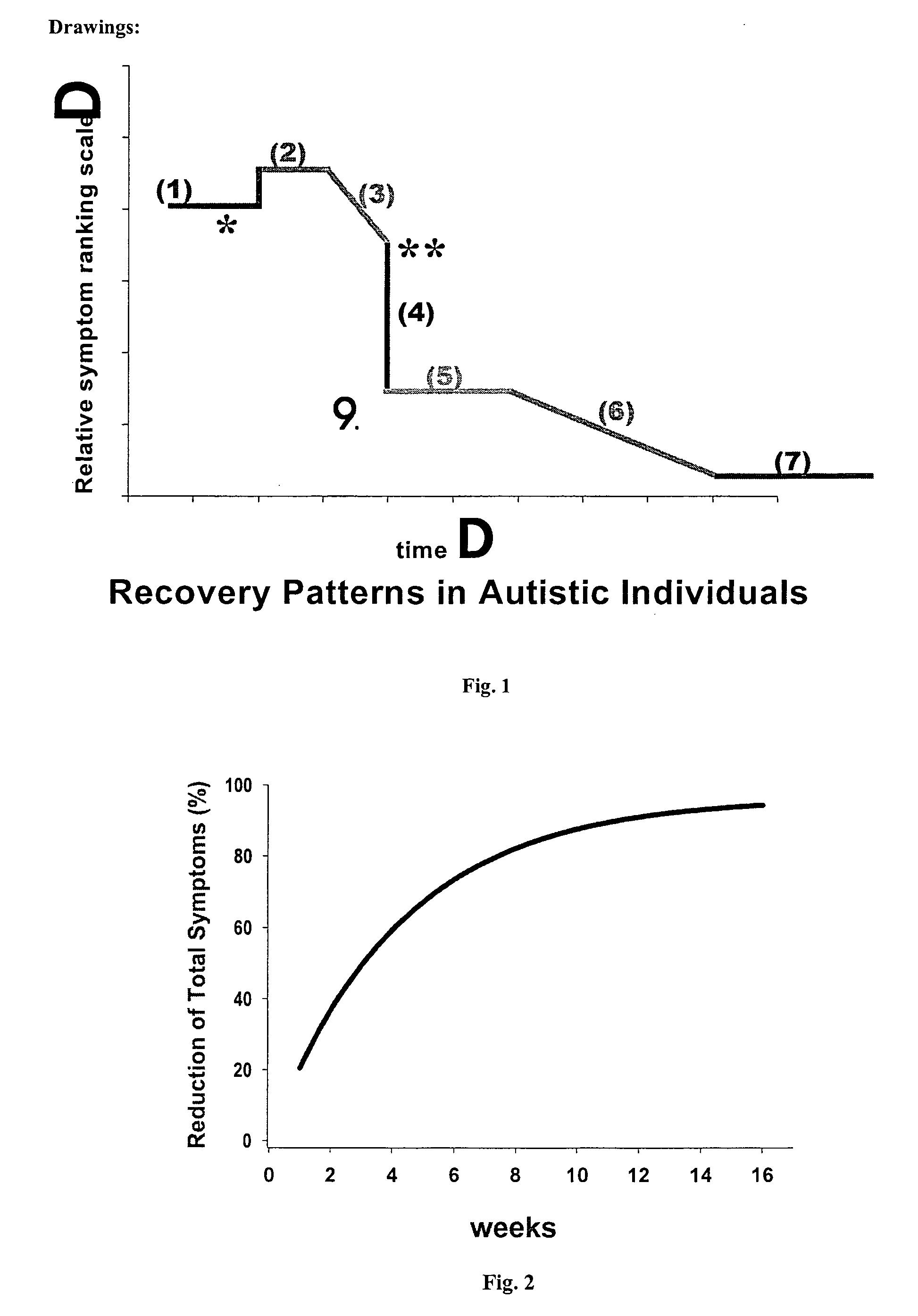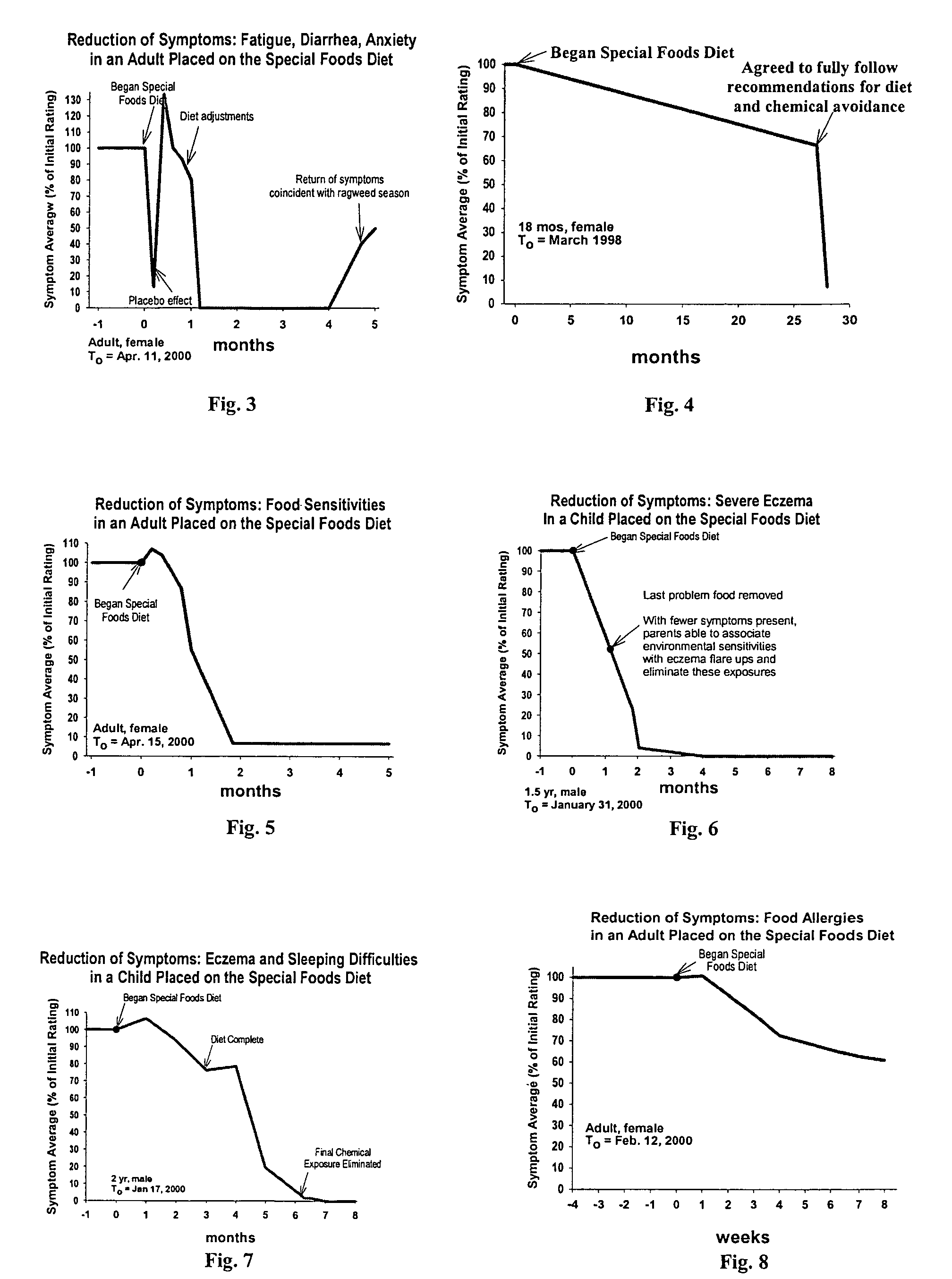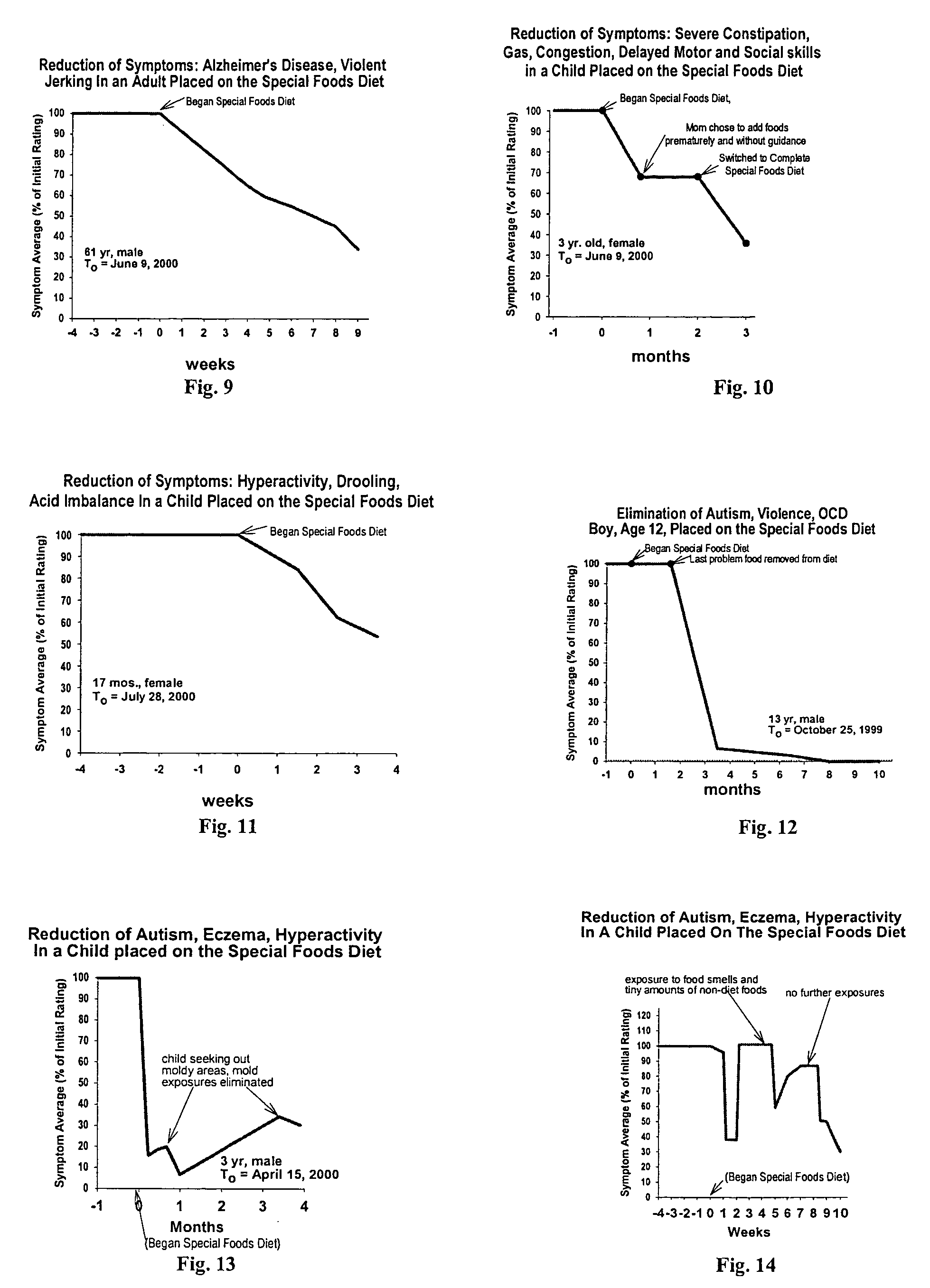Although this was an appropriate goal, it was found that simply providing a selection of new foods to choose from was not the highly
effective solution hoped for.
Although the presence of food reactions, a family history of food allergies; and the presence of chronic, persistent symptoms are characteristic of an individual who is likely to have food sensitivities, problems still exist limiting our success in identifying the specific allergens responsible (Williams, 2000).
One of the reasons that problem foods are difficult to identify is due to the fact that not all of the biochemical mechanisms are well understood and identified.
Although there are numerous tests available, including but not limited to, IgG specific RAST (radioallergosorbent test), IgG4 Specific RAST, IgE specific RAST,
skin tests (
scratch test or prick test), ELISA / EIA (
Enzyme Immunoassays) panels to test for the presence of IgG and sometimes IgE antibodies,
Scratch test, EPT (End-point-
Titration), Cytotoxic Test, and ALCAT, no test is able to accurately and completely identify the foods that are the problem, even for those tests whose scope is narrow, e.g., RAST.
This investigator maintains that identification of problem foods is far more complex than anticipated by other investigators.
The cells being the chemical soup that they are, literally any one or any combination of these substances could cause adverse physical symptoms in any given individual.
Even in the conventional
protein model, it is well known that the active regions of a
protein are limited to a relatively few sites on that
protein that have specific stereochemical configurations that accept and react with appropriately configured portions of other proteins or any number of smaller substances that match the stereochemical requirements.
In light of this, this investigator fails to understand why the study of the allergenic substances and the
immune system of humans is limited to only proteins.
Thus a food may show no reaction in a
skin test but cause a severe reaction in the
digestive tract.
Because of these daunting complexities, not only is no existing test adequate for the accurate identification of food allergies and sensitivities and
intolerances, this investigator does not expect there to be derived a blood,
in vitro, or
in vivo test that would accurately identify all problem foods and apply accurately to all of the above situations.
More subtle reactions are rarely accurately identified by these tests.
Patient history is then relied upon, but unfortunately the patient is also able to tell only the most obvious reactions.
The remainder tends to be confusing to both the patient and practitioner.
Although having a selection of new, unfamiliar foods to try is helpful, the lack of reliable information on foods to avoid tended to make a mockery of attempts at dietary intervention.
Including new foods in a diet that also contains problem foods cannot provide the
symptom relief desired by the food-allergic or food sensitive individual, and the result tended to be frustrating and not achieve the desired relief from symptoms.
From the viewpoint of a person suffering from food-related symptoms, this is an unsatisfying and unacceptable approach.2) Distinguishing between symptoms associated with foods and those associated with other sources such as
pollen, mold, pets, chemical sensitivities: Symptoms caused by foods can also be caused by other environmental factors such as
pollen, mold, pets, and chemical sensitivities.
Even if a diet were to be completely correct, and eliminate all food-related problems, a food sensitive individual might not even be able to tell much, since a food sensitive individual frequently also experiences similar symptoms caused by environmental exposures such as to
pollen, mold, pets, and chemical exposures.3) Persons following dietary advice tended to develop new food-related problems: A person with food allergies, sensitivities or
intolerances who tries to develop a diet, is generally only able to correctly eliminate a few of the strongest food sensitivities.
The allergic person generally fails to adjust by eating larger portions of the remaining complex carbohydrates.
Developing new food sensitivities and experiencing increasingly severe symptoms to other foods is a very common problem.
When many problem foods remain undetected, and foods closely related to foods already eliminated are eaten more frequently, and overall level of nourishment falls, the effect can only be an eventual decline in
general health and development of new food sensitivities and an increase in severity of symptoms.
In addition, because many individuals with food sensitivities also experienced symptoms from non-food items to which they might be continually exposed, such as molds or a recurring
chemical exposure, the relief provided by
elimination of some of the foods was insufficient, in terms of the overall level of exposures, to prevent the continuing long term deterioration in overall health that many individuals experience.4) Use of supplements: Often individuals are advised to eliminate some foods from their diets, based on the results of the above inadequate tests, and then to take a number of dietary supplements to counteract the remaining symptoms the person is experiencing.
Although some persons have improved using this strategy, complete relief from symptoms is very rare.
Except in instances in which the symptoms are very severe this method can be very confusing and inaccurate.
Often the individual involved has a difficult time deciding if there was actually a change or not.
Because of the inherent variability that occurs using this method, it can take 3 or more years for an individual with multiple food sensitivities to identify many of the problem foods.
This is a very discouraging prospect, because in the process they have often managed to become allergic or sensitive to a whole set of new foods.
The result is a virtually non-ending set of experimentation that never fully provides the set of information needed by the individual.6) Rotary diversified diet and other approaches have also not proven to fully solve food related problems.
Further, these diets are different enough that the former eating patterns are inappropriate and the individual inadvertently seriously under eats, generally eating only about 20-25% of the daily calories needed.
In addition to the effects of the dietary supplements mentioned earlier, the result is generally very frustrating to the individual, who generally feels some small amount of temporary improvement followed by a return of the previous symptoms at the previous level of greater in intensity.
The individual then generally follows a frustrating, frightening series of cycles of diet modification followed by temporary improvement and subsequent development of new allergies and sensitivities.
The result is that in
spite of the availability of new food choices, virtually every person suffering from mild to moderately severe food allergies, sensitivities and intolerances remains with the problem foods unidentified, continues to regularly consume foods that bother them, and suffer the adverse effects on health that come with continual, long-term adverse effects of chronic reactions, chronic
irritation and tissue injury, and chronic
inflammation.
The ability to accurately diagnose the problem and accurately identify the substances the individual is sensitive to is poor, even worse than that for foods.
Even when accurately described by an extraordinarily observant individual, the symptoms experienced are so complicated that accurate cause and effect associations are virtually impossible.
The patient following these guidelines, even whole heartedly and diligently, generally finds after spending many thousands of dollars, that they are some better but overall have not improved all that much.
The patient eliminating the foods that are identified generally feels that they are some better but overall have not improved all that much.
If tests show no food allergies following within the standard true
allergy definition, then no useful guidance is provided.
The patient following this approach carefully and completely, generally feels that they are some better but overall have not improved all that much.
Unfortunately these individuals often lose massive amounts of weight and in a few months become sensitive to more foods and experience more severe symptoms.
The patient generally reports that they are some better but overall have not improved all that much.
If this same person were diagnosed as suffering from a somatic disorder, the patient frequently becomes hostile and indignant, feeling that the complaints and very real symptoms are being ignored and undervalued by the practitioner.
These individuals leave feeling undermined, misunderstood and insulted.
The rare few who accept the diagnosis and enter treatment, find that they are some better but overall have not improved all that much.
People undergo weeks of sauna treatment, have their mercury amalgam fillings removed, undergo colonics and other cleansing therapies, undergo all sorts of
acupuncture,
biofeedback, and the like, and so forth, and overall find that they are some better but overall have not improved all that much.
Moderately severe to mild or subtle food allergies, sensitivities and intolerances can no longer be ignored or grudgingly tolerated by the medical
community as uninteresting and unimportant.
For the food sensitive individual, this means that mild or moderate allergies, sensitivities and intolerances are no longer something to ‘put up with’ and partially ameliorated with medications to alleviate some of the symptoms, food-related problems are significant and if unrecognized and not avoided, can cause serious chronic and debilitating diseases.
Until now there has been no effective strategy available to either the conventional medical
community or to the alternative medical
community for accurately separating out the various causes and accurately identifying the specific agents or substances responsible for causing symptoms in each area.
The incredible complexity coupled with inappropriate belief strategies and paradigms in both the conventional medical community and the alternative medical community have prevented the development of effective strategies.
It became very clear to this investigator that the complexities associated with food allergies and sensitivities, intolerances, and food associated anxieties and somatic disorders were not going to lead to effective strategies for treatment for a very long time, if ever, should the current directions and research emphasis continue.
This investigator abandoned a search for a better
in vitro or
in vivo testing method, realizing that the huge number of substances and the many changes that occur to these substances over time, presented an asymptotically difficult challenge, and indicated that a completely different approach would be needed to effectively address the above described problems.
 Login to View More
Login to View More  Login to View More
Login to View More 


